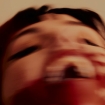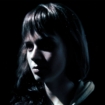Visit the Revolver shop for a limited-edition "opaque white" 2LP vinyl variant of Cult of Luna's upcoming album, The Long Road North — order yours now!
Cult of Luna's new album has a fitting title: The Long Road North. The record is a mile marker in a winding journey that's seen the post-metal veterans refine their sound and build a towering discography. On their ninth full-length, the Umeå, Sweden, band has shed the concept-driven songwriting approach of their earlier material and replaced it with a more instinctive process, one that's literally and figuratively closer to home for the band, but still yields their uniquely huge, aggressive, suite-like songs.
The Long Road North feels like a clarified version of what they've spent decades working toward. The production gives their vicious melodies a biting edge, while a host of guest musicians gives the arrangements an orchestral flair. Composer Colin Stetson adds gusts of violin-like melodies of layered woodwinds on "An Offering to the Wild" and "Beyond II." Members of French indie band Phoenix guest-shred on "Blood Upon Stone." Clean vocals and woozy guitars haunt songs like "Into the Night." While it might sound like a lot of ideas on paper, The Long Road North is cohesive, grand, and undeniably Cult of Luna in its heaviness and fury.
The record, along with his career in film and bustling home life, have kept vocalist Johannes Persson has been busy. While speaking with Revolver, one of his kids even briefly interrupts our interview to retrieve the family cat. "That's my life in twenty seconds," Persson says with an exasperated smile. Both because and in spite of the exigencies of life in their hometown during COVID, Persson and Cult of Luna have arrived at their most productive era yet, and The Long Road North truly sounds like a band who've come home.
Revolver spoke with Persson about embracing intuition, making a record during the pandemic, collaborating with a variety of guests and much more.
EARLIER IN YOUR CAREER, CULT OF LUNA HAD THESE BIG, THEMATICALLY DRIVEN ALBUMS LIKE VERTIKAL. MORE RECENTLY, THE BAND SEEMS TO HAVE TAKEN A DIFFERENT APPROACH. WHAT DROVE 2019'S A DAWN TO FEAR AND NOW THE LONG ROAD NORTH?
[After 2016's] Mariner, I noticed in myself that I had shifted perspectives and views and most of all what I value in life. It wasn't from one day to the other, but I started to think about how that subconscious machinery works, and I wanted to try that out in songwriting. We decided together that, instead of writing from a narrative or storyline, we were going to let our subconscious go and write more intuitively. Like, "What happens if I just pick up the guitar and not try to write like a machine like on Vertikal, for example, but just write for the sake of writing and keep what's good because it's good?" It ended up with us coming from the studio — we went to Norway to Ocean Sound Recording, this amazing studio with open water in front of you and this mountain scene behind — with two and a half hours of music. We had way, way more than we could fit on an album. So we had to kill a few darlings [to make A Dawn to Fear].
During the first COVID summer, we'd written a couple songs, went into the studio again, recorded some new songs and put out an EP, [2021's The Raging River]. And we continued writing — same motivation, same approach. Then, we got to last summer and took some songs from the second session and the first session [to make The Long Road North]. So I view these three records, two LPs and one EP, as the product of the same creative explosion. I'm not saying we're ending it now — I don't know where this is going to end, to be quite honest. And I'm not saying these records have the same sound to them. I think we've changed in our approach to creating an atmosphere. But the interesting thing about these records is that we haven't had a narrative going. With The Raging River and The Long Road North, there's definitely a narrative, but it's like we've put the pieces together afterward. It's almost like a jigsaw puzzle, but we didn't have a box with a picture. We just put all the pieces together, and then it was pretty apparent afterward what the last few years have meant to me, [and] what I've been through.
THE LONG ROAD NORTH HAS SONG TITLES THAT FEEL LIKE CHAPTERS— "INTO THE NIGHT" FOLLOWED BY "FULL MOON," AND SO ON. WHAT IS THAT FINAL PICTURE, OR WHAT BINDS THIS NEW RECORD TOGETHER THEMATICALLY?
A huge thing that happened to me that has inspired my part of the band and my part of the writing is my long road north. I lived in Stockholm for 12 years. Long story short, I kind of reevaluated my life, and we moved eight hours north back to Umeå, where I grew up, with the kids, and pretty much for their sake. We planned on going on vacation with the kids [in 2020] and couldn't go anywhere — the border with Norway was closed — so we went inland and did a road trip in the north. Very beautiful. I used to go with my dad when I was a kid, and I revisited these places with my kids.
The nature, scenery, and everything really felt like coming home again on an emotional level. I talked about the subconscious thing when I want to write, but on certain occasions, I've had these very concrete subject matters that I want to communicate. Sometimes it can be a story, like "The Silver Arc," the second song on The Long Road North, and sometimes it can be a feeling — just standing on a mountain, seeing the midnight sun turn from its lowest point. I try to paint that picture with the tools I have. It's an abstract feeling, it's a very positive, strong feeling, and those have really tied the songs together to a single narrative.
CULT OF LUNA HAS A LONG HISTORY OF REALLY PRODUCTIVE COLLABORATIONS. THERE WAS MARINER WITH JULIE CHRISTMAS, AND THE RAGING RIVER EP HAS A HAUNTING MARK LANEGAN FEATURE. WHO WERE SOME OF YOUR COLLABORATORS ON THE LONG ROAD NORTH?
On this record, we have Mariam Wallentin. She's a singer from Sweden. I wasn't aware of her work. I think I'm gonna blame everything on Thomas [Hedlund], our drummer, who kind of connected everybody. We had this song "Beyond" that we developed into a multi-chapter song. We thought, what would happen if we had the same song — same lyrics, same music — but do a totally different arrangement? When we talked about who to work with, Thomas came up with Mariam. He played some of her stuff, and you can hear this amazing, saturated voice. I don't think "collaboration" is the right word, really…we put our songs in our collaborators' hands. Not only do we believe in them, but we're sure they'll help us take our album to another level. At that time, we'd started to record already, and we already felt which way we were heading. This album is a very big, almost cinematic-sounding album. That's how we ended up asking her. Her voice is so living — it's an atmosphere in itself.
Then we have Chris Mazzalai and Laurent Brancowitz from Phoenix. Thomas has played with Phoenix for I think the last 15 years, and we know the guys really well. Super nice guys. We all love their band, and we meet up in France if they're in town when we play Paris. Me and him play this part on "Blood Upon Stone" that has this special rhythm to it. We realized It sounds like a Phoenix part and asked them to do it. They did and were nice and generous with their time.
TRACKS LIKE "AN OFFERING TO THE WILD" BRING IN MORE THAN METAL INSTRUMENTATION. I'M ASSUMING THIS IS THE COLIN STETSON TOUCH?
I work in the film industry. I love movies and horror movies; I loved Hereditary. That was where I looked him up. I wondered who made this incredible soundtrack and saw, ah, Colin Stetson. Thomas knows him through the Arcade Fire guys. He's a busy guy, and we're just a small metal band. And he agreed! So again, we just put our tracks in his hands. The way he uses instruments is very special. That kind of creativity, I don't even know how to verbalize it. He uses instruments in ways they haven't been used before. He's almost like Hildur Guðnadóttir…The way she uses the cello, it's more of a being than an instrument.
MARK LANEGAN, MARIAM WALLENTIN — THESE RECENT VOCAL COLLABORATORS ALL SHARE A KIND OF WEATHERED, SPECTRAL SOUND. WERE YOU GOING FOR A SPECIFIC KIND OF VOCALIST? IT FEELS VERY INTENTIONAL.
It's not intentional in the way you're implying, I think it's much simpler. It's a matter of taste. We like writing this kind of music, and we love these artists. And that's basically it. That kind of marriage is pretty well-fitted. Hearing Mark Lanegan's voice on a song I wrote is still a bit weird to me.
I haven't been depressed for the last 15 years, but I had a couple of years [earlier] that were really, really dark, and he kind of walked through those years with his records in the first years of the new millennium. When you communicate with a person — I'm too old to idolize somebody like a fan — but when you meet somebody that meant so much to you, well, I find it hard to know how to act. I just got out of the way, said to him exactly how much his music and poetry has meant to me, and then said, "Let's get to work."

WHAT WAS THE PROCESS OF STRUCTURING THE RECORD WITH ALL OF THESE DIFFERENT PIECES DURING COVID?
The pandemic prevented us from going back to Ocean Sound, so we had to record in our hometown. Moving back to Umeå made the actual writing simpler because we have our own rehearsal spaces. The problem is recording in your hometown, you don't pause your life like you do when you go, let's say, to Norway. When we go to Norway, we go there for a reason. We spend every hour waking and sleeping in the same studio, which makes it feel like a collaborative effort. If someone has an idea, we can discuss it right away.
Recording in your hometown, I still have these kids to take care of, I still have to drive them to school. We figured out ways to work in the studio, but what lacked was the kind of collective feeling that we're doing it together. It still turned out good! But the process wasn't as rewarding. For a listener, it doesn't really matter, but for us as musicians, it's everything. But we didn't have an alternative, so I'm not bitter.
YOU'RE NOT A BAND KNOWN FOR LONG GAPS BETWEEN RECORDS. WHAT'S COMING NEXT FOR CULT OF LUNA? HAVE YOU STARTED WRITING NEW STUFF OR MAKING SENSE OF WHAT'S EXTRA FROM THIS RECORDING PROCESS?
The problem right now is there are so many things we want to do. We haven't really decided in what order we should do it. On top of that, we're a bunch of very busy individuals. I have my collaboration with James Kent at this year's Roadburn. I'm going to direct a feature film in the summer. We have other people doing other stuff. We've started talking, but we haven't really decided yet. There's a lot of stuff we can do; we just have to decide when and where.












